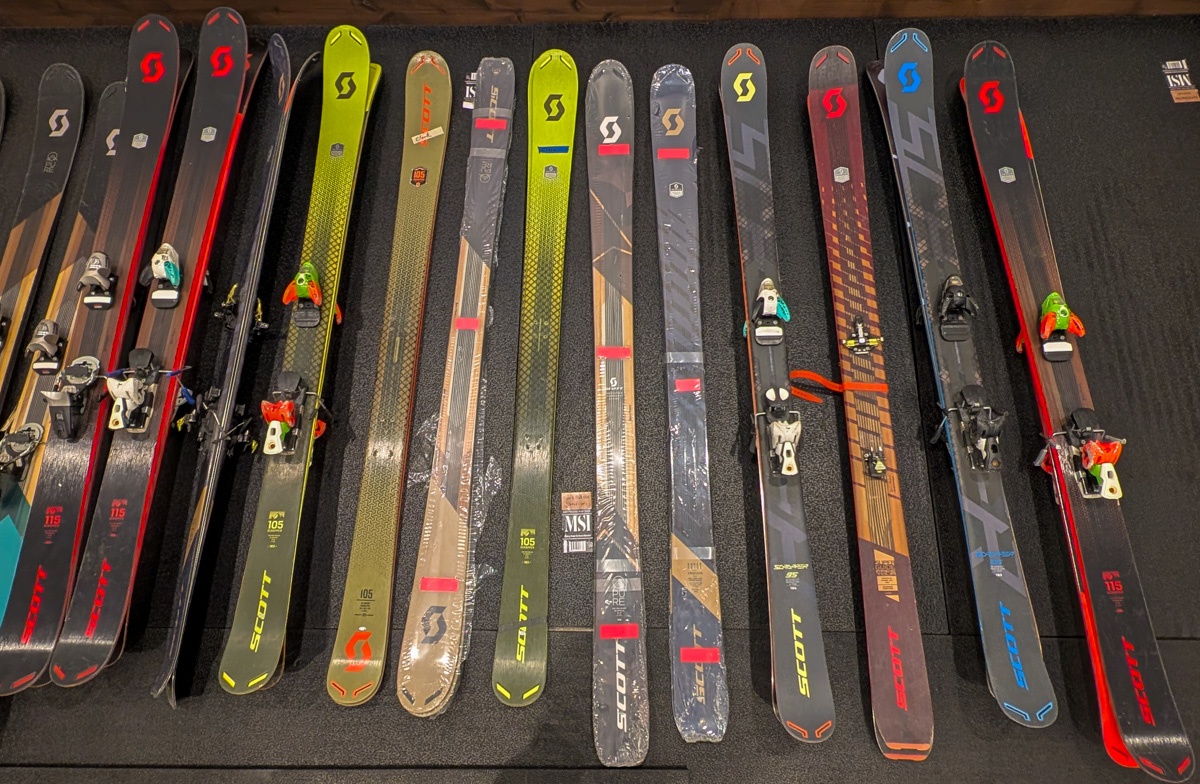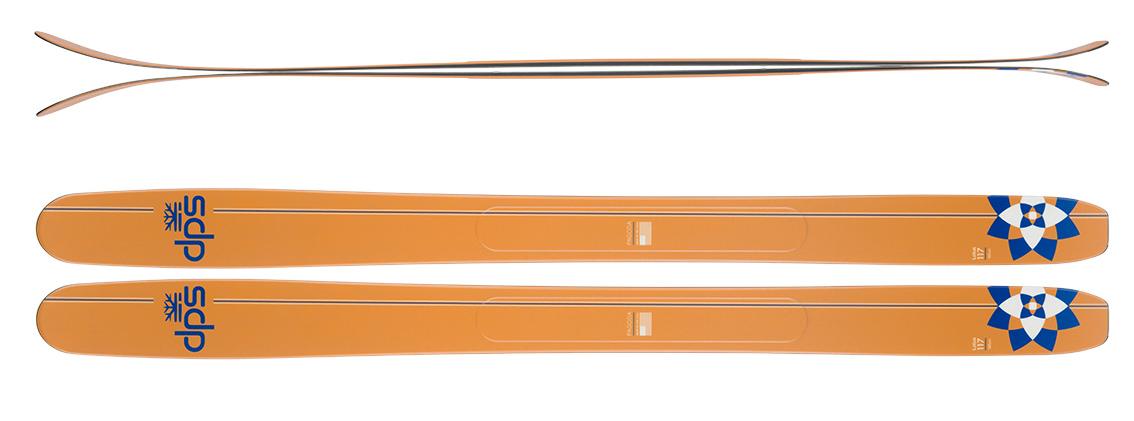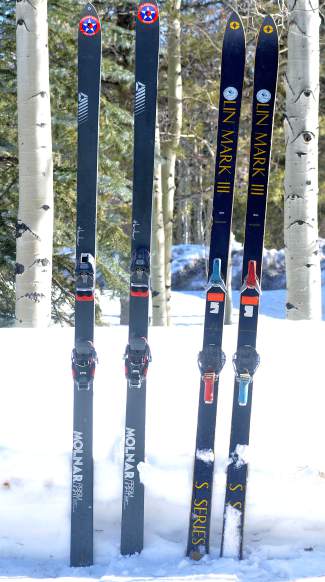
If you ask a ski shop employee, “How long should my skis be?” you’ll likely hear, “Somewhere between your chin and the top of your head.” As useful as that advice may sound, it does leave a range of about nine inches, which generally covers a range of ski lengths, depending on the brand.
Generally, beginners should stick to the shorter end of that range for better control, while advanced skiers may prefer longer skis—or even go beyond that range. However, with so many ski designs on the market, this rule of thumb isn’t always reliable. Factors like skier ability, skiing style, and ski construction all play a role in determining the ideal length.
- Related: Step-by-Step Ski Buying Guide
How fast do you like to go? Ski length can significantly impact performance at different speeds. For a skier just transitioning from the bunny slopes, shorter skis offer better control, making it easier to form a pizza wedge to slow down. On the other hand, an expert skier carving tight turns at 60 mph will find short skis unstable, as they tend to chatter and get tossed around. Longer skis provide the stability advanced skiers need, absorbing impacts and reducing vibrations for a smoother ride.

What kind of skiing do you do? The ideal ski length also depends on your skiing style. For someone carving groomers and swooshing down corduroy, stability is key—going longer helps achieve that. If someone skis trees and bumps they may want to size down to maximize their maneuverability. A long ski can get caught up in tight-turning spaces. Longer skis increase the swing weight, which can in turn slow you down and prevent those quick snappy turns for those technical slopes. For freestyle skiers, a shorter ski means they can spin faster, and reaching for grabs becomes easier, though some may argue that longer length gives you style, which is the most important part. The application of your skiing will make a big difference in how long your skis should be.
How are your skis designed? When we measure the length of the ski, things like camber and rocker profiles are often overlooked. While tip-to-tail length is a good ballpark, we couldn’t say that a full-rocker twin-tip ski will ski the same as something with a full-camber directional construction. A more accurate thing to measure is something called the effective edge. The effective edge is measured by how much of the actual ski is in contact with the snow. Different ski types usually follow the same trends with different tweaks. Carving skis have a long effective edge relative to the ski. This allows the skis to track the ground and prioritize stability. Powder skis generally have a lot more tip rocker to allow the ski to float in powder and softer snow conditions, but the effective edge is a lot shorter. All mountain skis lie somewhere in the middle. Advanced riders may find they are more comfortable on a carving ski that comes closer to their chin while riding on powder skis up past their head.

Sizing can be tricky. Pulling the trigger on a new pair of sticks can be risky if you don’t know what you’re looking for. With so many different variables it can feel like a daunting task to pick the perfect length. However, even all the internet research will never beat a real-world test. Many ski shops offer a demo program where people can try out and test different skis. For someone unsure about the skis they are looking at or just wanting to experiment with different sizes, it’s a great resource to take advantage of. The old sizing of chin-to-head still works, but if you want to really dial in your perfect ski, it is best to try before you buy.

Long skiis truck& short skiis suck…